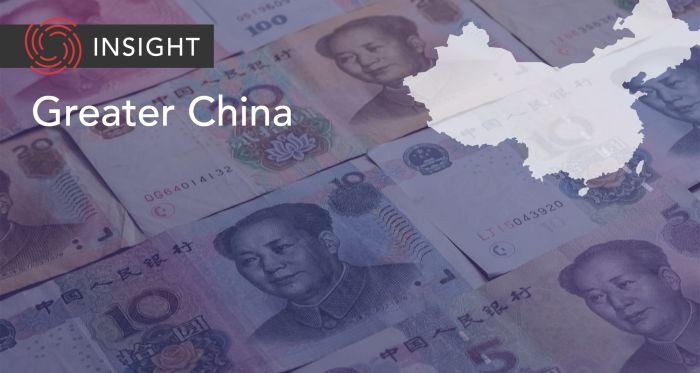The Takeaway
The Biden administration’s announcement of a planned ban, beginning in 2024, on American investments in Chinese high-tech industries soured relations between the world's two largest economies earlier in August. In late September, the Beijing-linked China Council for the Promotion of International Trade formally asked the U.S. to “carefully consider” its plan, reigniting debates in China around Washington’s looming ban. Beijing has yet to impose concrete retaliatory measures, but investors in both countries remain wary.
In Brief
- On August 9, 2023, U.S. President Joe Biden announced an executive order banning American investments in “sensitive technologies and products” in “countries of concern” — namely, the People’s Republic of China and the special administrative regions of Hong Kong and Macau.
- In the order, Biden highlighted perceived threats to U.S. national security when technological know-how is transferred in the form of outbound investment to countries that use “comprehensive strategies” to bolster both “commercial . . . and military sectors.” He called the situation a “national emergency” in the order.
- Employing a ‘small-yard, high-fence' approach — referring to the narrow but hard-hitting scope of the restrictions — the executive order seeks to limit or prohibit investment in three areas: semiconductors and microelectronics, quantum information technologies, and artificial intelligence (AI) systems. While the 45-day public consultation period ended on September 28, it is unclear how and when in 2024 the ban will be implemented as the U.S. Treasury Department is still working on the order’s fine print.
- Since the August announcement, Chinese stakeholders have expressed their disappointment over the proposed ban. On August 10, a spokesperson for China’s embassy in Washington criticized the Biden administration’s “politiciz[ation] and weaponiz[ation]” of trade and vowed that Beijing would “closely follow the situation and firmly safeguard [its] rights and interests.” In late September, the Beijing-based China Council for the Promotion of International Trade formally asked the U.S. to “carefully consider” its plan, arguing that the consequent risks, costs, and uncertainties could endanger critical global supply chains and harm the interests of both countries.
Implications
Intended to address key loopholes in current legislation, the draft regulations ban U.S. citizens and residents, as well as any entity organized under U.S. law and their foreign branches, from engaging in transactions such as mergers and acquisitions, greenfield investments, joint ventures, private equity, venture capital, and certain debt financing in sensitive sectors in “countries of concern.” While passive investments such as public stocks and mutual funds are still permitted, some members of U.S. Congress are pushing for their inclusion in the ban.
Despite bipartisan support of the executive order, some key voices within the American business community have pushed back. During the China Business Conference held in Washington, D.C., in May, Suzanne Clark, president and CEO of the U.S. Chamber of Commerce, stated that while the association supports “targeted and responsible” trade and investment restrictions, “not every economic interaction with China poses a national security risk.” With US$8.2 billion worth of foreign direct investment flowing from the U.S. to China in 2022, Clark urged the U.S. government not to stand in the way of the vast commercial opportunities still available to American businesses.
Another concern for investors stems from the vague language within the executive order. Some critics have complained about being responsible for compliance with the order, while others are pushing for greater clarity on the definition of “U.S. persons” and “Chinese entities,” particularly when overseas branches, subsidiaries, and shareholders who are dual nationals are involved. Others have criticized the open-ended scope of what constitutes the use of “sensitive technologies” for military, intelligence, and mass surveillance purposes, given that emerging technologies like AI easily fall into ‘dual-use’ territory.
Despite the current Sino-U.S. tech standoff, the two countries remain interconnected in emerging sectors that generate huge commercial interests for both. Leading up to the executive order’s release, U.S. chip manufacturers heavily lobbied against tough restrictions, noting that about one-third of their revenue originates from China. Anticipating major supply chain disruptions, the group argued that a ban could seriously hamper the sector’s global competitiveness.
China only has a meagre share of U.S. foreign direct investment stock, and the proposed restrictions will not be applied retroactively. But American investors who are involved in the tens of billions of funds going into China’s AI and biotech segments now need to rethink their roles in follow-up investments. Venture capitalists connecting U.S.-based investors to (mostly tech-focused) Chinese startups are already facing regulatory headwinds, and the order may complicate matters further for this group.
What's Next
- The ‘yard’ may expand over time
While Washington’s targeted approach aims to allow the U.S. to de-risk without completely decoupling from China’s tech industry, experts suggest that as regulatory scrutiny increases amid growing congressional pressure, the scope of the ban could expand to include other technologies with possible security applications, such as biotechnology, hypersonics (i.e. vehicles that move at five times the speed of sound), and autonomous vehicle-related technologies.
- U.S. allies mull similar moves
As the U.S. aims to cut China’s access to foreign funds through these new regulations, the success of the investment ban will also rely on the Biden administration’s ability to get allies on board. At present, only Taiwan and South Korea employ outbound investment-review regimes concerning high-tech industries. Other diplomatic partners, such as the European Union, are mulling the idea of additional investment screening. The U.S. will need to ensure a unified response, lest other countries move in to fill the void left by American investors.
- Skepticism about impact of ban
U.S. foreign direct investment in China’s ICT sectors has markedly declined since 2018 due to regulatory constraints and a worsening political climate. As a result, some Chinese stakeholders are skeptical that the proposed investment ban will have any substantial effect on the country’s tech industry, particularly when grouped with the long list of existing U.S.-led sanctions such as the CHIPS and Science Act.
• Produced by CAST’s Greater China team: Maya Liu (Program Manager); Karen Hui (Analyst); and Chloe Yeung (Analyst)




